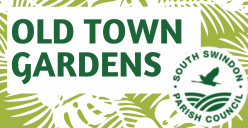In case you missed it see what’s in this section
Let's Talk
6 effective ways to learn better and remember more
Your academic success depends directly on your memory speed and your ability to make cause-and-effect connections. The following methods will help you remember and process information faster and, in theory, get you closer to an honors degree or to winning a student competition.
1. "The semantic tree", the Ilon Mask approach
The ancient philosopher Heraclitus, the creator of the method of scientific dialectics, believed that all the objects around us "are an everlasting living fire, burning up and dying out in a measured way". This notion reflects the essence of scientific knowledge, striving to dissect everything and everything, to get to the essence of things, to reveal previously inaccessible structures and elements, and to understand their content.
Heraclitus understood the role of memory in the ability to perform complex cognitive tasks. When exploring new things, a person tends to draw his or her conclusions based on facts known to him or her. By linking new concepts to the well-known, our mind identifies patterns, reaches into the essence of phenomena and the structure of things, and hence does not just remember - understands the material under study.
The "semantic tree" method, which involves sequentially parsing and analyzing the structure of each object under study, is used by famous American inventor Elon Musk, the founder of Tesla and SpaceX. He recommends that, when starting to study each new phenomenon or object, "make sure you understand the basics that make up the trunk of the tree and the big branches, before diving into the leaves - that is, the details - otherwise the latter will simply have nothing to grow on." Each object of enquiry thus acquires a meaningful structure in the mind of the researcher, and the information gained becomes knowledge and experience.
2. Case-based learning method
Empirical knowledge forms a significant part of the content of science. And the case method makes full use of this content. Supporters of this practice learn theoretical material based on a sequence of cases. Each case is considered as if from three points: the starting point, the procedural point, the resultant point.
At the starting point, the range of actors and objects and the preconditions for the development of the situation are outlined. Then the main event of the case, i.e. the action leading the researcher to the final point, is examined in detail. By completing the case analysis, the researcher should identify patterns, in other words, come to an understanding of the process or phenomenon in question, identify shortcomings, and develop recommendations for dealing with similar situations in the future.
Case methods are very popular in the social sciences, but the method also provides good results in higher mathematics, biology, and programming.
3. Walter Poke outlining the methodology
Taking detailed and accurate outlines will help you remember any idea and understand the research topic. The method of American scholar Walter Poke of Cornell University (or Cornell Method) teaches memorization using short summaries to any topic.
Here are the basic rules for taking notes:
- deconstruct knowledge and record information in your own words;
- separate notes and main ideas on a few lines to cover the information in the future;
- abbreviate information and create author's marks to save time;
- break up sentences into individual phrases and write them down;
- learn to distinguish important information from secondary and irrelevant to the study; write down only what is important.
Writing outlines according to the rules will help you quickly retrieve the information you already know, "retrieve" it from your long-term memory and apply it, for example, during the preparation for an exam. Sometimes it can be very difficult to understand a subject, but you always have the option of using the essay service online to complete a difficult task.
4. "Benedict Carey's 'unhurried' time management
Benedict Carey's time-management model sees learning as a process that is harmed by any haste. The author compares learning to water the lawn: "You can water the lawn once a week for an hour and a half or three times a week for half an hour. If you do it three times a week, the lawn will be greener.
Regularly repeat, 'refresh' your knowledge, taking 1-2 day breaks to remember it better. This conservative and fairly well-known method of memorization helps to improve the quality of residual knowledge.
5. The small-group teaching method
The small group method has been known in higher education since the 1950s and has been widely used in many higher education institutions. It is based on an understanding of the social nature of human beings and the peculiarities of joint activity. Working in a team helps to memorize all information better and also helps to develop the following qualities:
- communication skills, or the ability to communicate and interpret information;
- ability to work in a team (team-building);
- the ability to learn through communicating or solving a problem together.
Gathering in small groups is also possible outside the university classroom. Many self-organized discussion clubs, libraries, and any suitable public space use this training methodology.
6. Edutainment and new online learning formats
You can succeed in your studies by using different media. Look at notes to gain a deeper understanding of the context and essence of phenomena, read not only textbooks recommended by the teacher but also alternative ones, watch educational videos on YouTube and listen to podcasts on a topic that interests you.
By combining sources of information, you engage different areas of the brain and accumulate information. In fact, edutainment in any form creates a surplus of knowledge, helps you absorb and deepen it by stimulating the processes of converting information into knowledge, and knowledge into experience.
Weather in Swindon
Listings





















